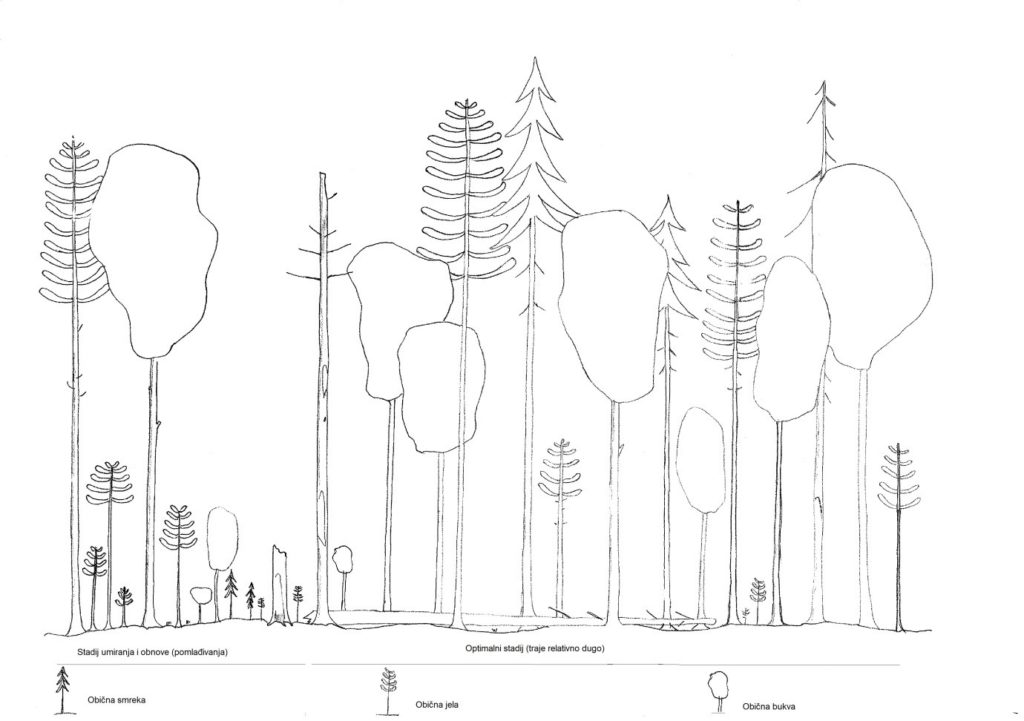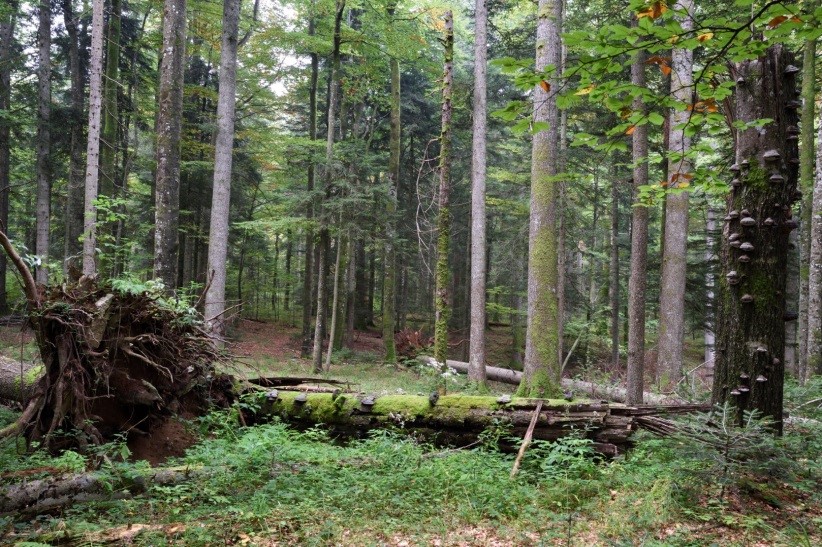The Čorkova Uvala rainforest is located in the north-western part of the Plitvice Lakes National Park, at an altitude of 860 to 1028 m, in the zone dominated by beech and fir forests. It covers a surface area of 84 ha.
It is considered a secondary rainforest, meaning that it developed with only minor human impact or without it. As life processes are able to take place without interference, all developmental stages of all components of the rainforest ecosystem are present in it.
The rainforest is dominated by trees of different heights, thicknesses and ages, making a powerful impression. For example, it is home to a European silver fir of over 500 years of age, with 58 m in height and 150 cm in diameter, as well as to specimen of the common beech and Norway spruce of impressive dimensions.
What is going on in the rainforest?
In the rainforest, changes are constantly taking place in development cycles spanning centuries, which entails changes in the ratio of tree species, vertical layering, density and number of snags, amount of dead wood, amount and size of openings in the tree tops, probability of trees being blown over or broken by the wind, and infestation of trees by harmful insects. Such phenomena do not affect the entire rainforest at once, but occur in individual parts of the forest, resulting in a mosaic appearance.

Why are rainforests important?
- They are significant for the conservation of natural heritage.
- They are characterised by a high degree of biological diversity, and by extension a high potential for genetic diversity.
- They are important for gaining insight into the natural structure of forests.
- They are reference places for assessing the effectiveness of forest management.


